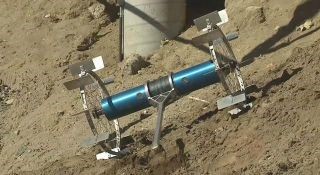
Early in 2020, NASA’s Space Technology Mission Directorate (STMD) prioritized funding opportunities for public-private partnerships to achieve goals that would expand capabilities and opportunities in space. This effort will increase collaboration with the commercial space sector to leverage emerging markets and meet NASA's strategic goals. NASA's investment in industry partnerships will reduce development costs and accelerate the deployment of emerging space system capabilities.
Just recently, NASA selected 14 companies to develop varied technologies to foster a sustainable Artemis program on the Moon by 2030. One of these companies is called Astrobotic Technology which was given $5.8M. The company will demonstrate a fast, wireless charging system that will address the challenges associated with using that technology on the Moon. The effort will build and deliver flight units for potential use on commercial robotic landers. Astrobotic will collaborate with NASA Glenn and has teamed with WiBotic of Seattle to begin developing this technology.
Wireless charging in space and on the Moon involves wireless transmission for power systems whose mechanical connections, if used, would be prone to getting clogged with lunar dust. Wireless systems never mechanically wear out! Figure 1.

Figure 1 WiBotic wireless charging systems consist of four primary hardware components: Transmitter Unit, Transmitter Antenna Coil, Onboard Charger Unit, Receive Antenna Coil (Image from WiBotic)
For the system to deliver wireless power, the Transmitter will first check to be sure a robot is within range. The system is so flexible that even robots with completely different battery voltages can share the same Transmitter Unit. It automatically recognizes each robot and adjusts charge parameters accordingly.
The components allow for extremely effective charging station deployment. The stations deliver power opportunistically to keep robots topped off and operating for long periods. This is much better than the outdated “full drain and recharge strategy” seen elsewhere.
WiBotic will deliver the power behind autonomous vehicle operations on the Moon. These rovers can get a fast wireless charge when near any number of wireless charging stations situated around the Moon’s surface. Rovers do not have to mechanically connect to these stations, the wireless proximity charging allows rovers to get a quick charge for maximum rover uptime or a longer charge when needed so that they will be able to perform their tasks almost continuously around the clock (i.e. the Lunar clock)
Applications for wireless power on the Moon
Applications that will need proximity chargers on the Moon include the marsupial roving missions, for robotic systems that have no onboard nuclear or solar power generators, charging toolkits on crewed lunar terrain vehicles, and powering the heaters of critical devices to survive the cold, cold lunar night. Temperatures on the Moon are very hot in the daytime, about +100 degrees C. At night, the lunar surface gets very cold, as cold as -173 degrees C. Figure 2.

Figure 2 NASA's Axelrover is a whirling robot designed for the very challenging terrain on the Moon and beyond. NASA refers to a robot like the Axel rover as a 'tethered marsupial rover' because it would spend most of its time attached to a larger vehicle (Like a baby kangaroo in its mother’s pouch) until it is needed. (Image from NASA/JPL)
Here is a video of an older Astrobotic rover for the Moon at NASA’s Glenn research center. It is an old 2013 video but it gives a great example of what these rovers can do.
Astrobotic is basically developing custom designs, sensor systems, and rovers for planetary surface missions on the Moon, later on Mars and maybe even an asteroid or two. These rovers will autonomously explore, engage in site preparations, as well as resource extraction. The rovers will have co-location technology for teams of rovers working together to optimize efficiency on exploration missions. Rover technology will consist of compact sensing hardware and unique software techniques so that teams of rovers will be able to estimate their positions relative to one another and enable precise navigation for optimum, efficient operation.
Astrobotic will offer Moon exploration and science knowledge with their Mobility as a Service. Figure 3.

Figure 3 Astrobotic mobility as a service (Image from Astrobotic)
To the Moon and beyond!
 Steve Taranovich
Steve Taranovich
Discussions
Become a Hackaday.io Member
Create an account to leave a comment. Already have an account? Log In.